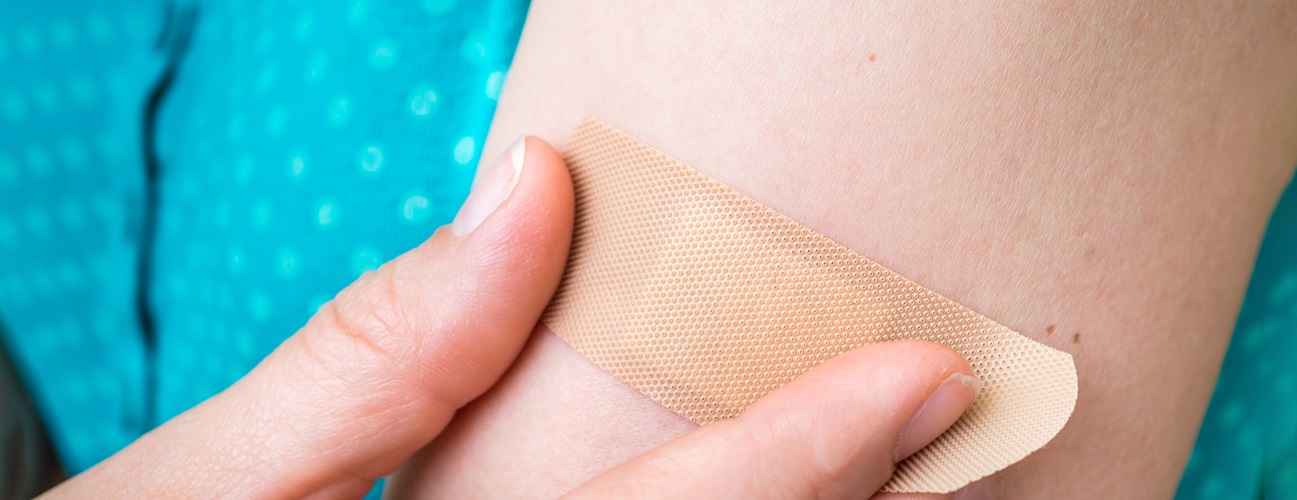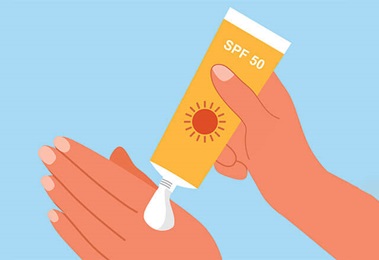Everyday Cuts and Scrapes: How to Prevent Scarring
Featured Expert
Ouch! Gardening, food preparation, sports and leisure activities, and life in general can result in occasional minor skin injuries. But scarring doesn’t have to be part of the picture. You can take steps to avoid ending up with a permanent reminder of your mishap — if you know what to do.
Proper treatment of all skin injuries is essential to avoiding scars, says Mark Fisher, M.D., a plastic surgeon who is the director of Johns Hopkins’ Burn Center and part of the Scar Revision Clinic team.
Fisher says, “Scarring can come from cuts — these are the most common injuries. But scrapes and burns can leave scars as well. Scars are more likely in injuries where the skin is not just cut but also crushed or otherwise damaged. Clean cuts can heal very well if they’re washed out and treated to avoid infection.”
If there’s no loss or destruction of skin and tissue, Fisher notes, “Stitches can be a great idea, since health care professionals are good at lining up skin borders, which can minimize scarring “
How Scars Happen
To understand how scars form and how to avoid them, it’s helpful to understand your skin’s healing process. When you get a cut, scrape or burn, your body immediately responds with a series of steps to heal itself:
- The first stage is hemostasis. The body prevents blood loss by sending platelets to the site, which bind together and seal the wound, forming a scab.
- Next comes inflammation. White blood cells arrive at the area to fight off bacteria. You may notice redness, swelling, heat and pain. This is a natural part of the healing process and resolves on its own unless infection takes over. More inflammation in the healing process can mean a greater chance of scarring.
- Proliferation is the next step. This is when the skin and vessels create new cells. As proliferation continues, you’ll see the edges of the scab shrink toward the middle, leaving new skin behind.
- Finally, maturation occurs. The wound is healed, and there may be a scar in its place.
Scar Revision Treatment

There are many different types of scars and scar revision treatments. Scar revision may improve the appearance of a scar or restore function to a part of the body that may have been restricted by the scar.
What You Can Do to Avoid Scars
Keep cuts and scrapes clean and covered.
For minor injuries, Fisher stresses the importance of keeping them clean and protected. Use antibacterial cream or ointment and cover the area with a bandage, which can speed healing. Avoid using hydrogen peroxide, which can be harmful to healing wounds.
The presence of debris, bacteria or other impurities in open skin can trigger infection and extend the inflammation period. Fisher says prolonged inflammation enhances scar formation. That’s why it’s essential to clean the wound carefully, with professional help if necessary.
Fisher advises, “If you have a scrape, such as ‘road rash’ from falling off a bicycle, treat that like a burn, and be aware that there can be a crush injury to the skin as well.”
Avoid scratching or picking scabs.
Healing wounds may itch, but you should avoid the temptation to scratch them. “Scratching the wound or picking at the scab causes more inflammation, making a scar more likely,” Fisher says.
Get help for serious skin injuries.
Fisher says it’s better to err on the side of caution when deciding whether to see a doctor about a skin injury. He says you should check in with urgent care for these types of skin injuries:
Continued bleeding. If a deep cut continues to bleed, seek help right away.
Deep puncture wounds. “These injuries are dangerous, because they set up a one-way valve in the tissue,” Fisher says — dirt and bacteria can get in but can’t get out.
Bites. Animal and human bites can carry some nasty kinds of bacteria. Bite wounds that break the skin should be washed out and treated by a professional.
Burns. While first-degree burns usually heal on their own, second- and third-degree burns can become infected. “If you’re concerned about any burn, come to the ER. We would much rather make sure you are OK than miss an infection,” Fisher says.
Skin wounds with extreme pain and fever. These symptoms can indicate a dangerous infection that could spread quickly. You should go to an emergency room without delay.
Scar Treatments
Once as scar has formed, are you stuck with it? Not necessarily. Plastic and reconstructive surgeons can do a lot to minimize scars and help you feel better about your appearance. Bonus: Some of these treatments can also address itching and pain associated with severe scars.
Here are some of the therapies available. You may need multiple or repeated treatments to get the results you and your doctor want.
- Topical treatments: medicated gels and creams, sometimes used with compression bandages to help flatten scars
- Injections: to fill scars that appear as “dents” or hollowed-out areas in the skin
- Skin smoothing procedures such as dermabrasion and chemical peels
- Laser therapy, which can flatten and soften scars and address abnormal skin coloration
- Bleaching for discolored areas
- Surgical removal of the scar
For the best chance of getting the results you want, choose a plastic and reconstructive surgeon with experience in minimizing scars, and be clear about what you hope to accomplish from the treatment.







